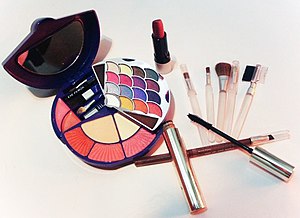 Image via WikipediaNatural dog food is fairly easy to find these days, but as with human foods labeled "natural", it is best to check before buying, and make sure they are truly all natural. However, even the ones that are often contain a lot of salt or other things that your dog may not necessarily need so much of.
Image via WikipediaNatural dog food is fairly easy to find these days, but as with human foods labeled "natural", it is best to check before buying, and make sure they are truly all natural. However, even the ones that are often contain a lot of salt or other things that your dog may not necessarily need so much of.If you can, the best thing you can feed your dog (or yourself!) is home-made food. Natural dog food recipes are not difficult. In fact it is very easy to make your own natural dog food. Without any problem, you should be able to make most of these dog foods at home. All you require is access to some fresh natural ingredients. Natural dog food recipes can also help keep your dog healthy by providing all the nutrients they need in the freshest form. If you want to strengthen the immune system of your dog then making your dog's food at home yourself is your best bet.
Your dog may even find relief from allergies or fleas. Home-made natural dog food recipes are much better than processed pet food. Some experts believe that processed food is responsible for causing many illnesses among pets. A constant diet of processed dog food may give rise to coat and skin problems and other serious health problems. In some cases, it could even lead to premature death of your dog.
Natural dog food is a great source of energy as well, and will help keep your dog happy as well as healthy. Various natural dog food recipes are available online, and there are also a number of natural dog food recipe cookbooks
 Image via WikipediaDogs not only survive but thrive on this type of food. Here is just one example of a popular natural dog food recipe, which is safe and healthy for your dog.
Image via WikipediaDogs not only survive but thrive on this type of food. Here is just one example of a popular natural dog food recipe, which is safe and healthy for your dog.Akita Style Rice and Lamb: The ingredients of this dog food recipe are lamb, brown rice, broccoli, potatoes, carrots and kombi. Brown the lamb in a skillet, and then add rice. Stir well until starting to brown, then add cubed potatoes. Cook a few minutes. Add to crock pot, along with a small quantity of water, and all other ingredients. Mix well, cover, and cook until tender. Yum! So good you will probably want some too!
Natural Dog Food Recipe Books:





















